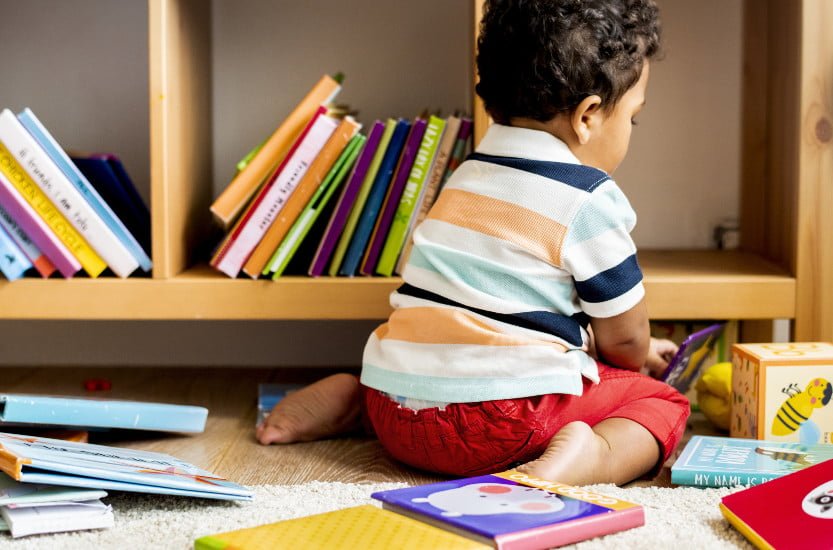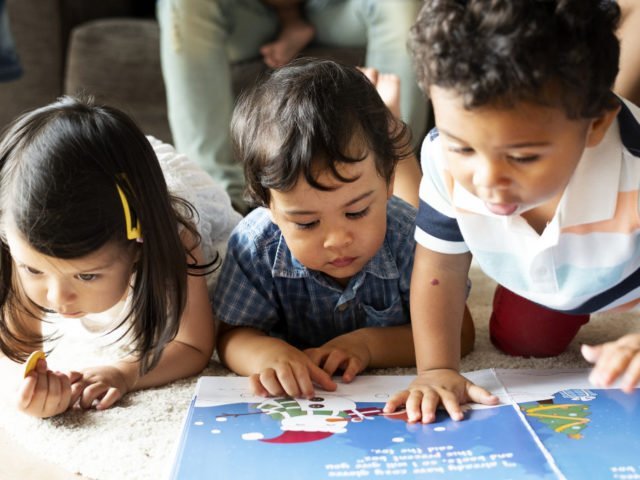From Allan Ahlberg to Dr Seuss, picture books matter because they create the foundations of a child’s reading life – and you never know what a difference your own book could make.
Once upon a bicycle, so they say, a jolly postman came one day, from over the hills and far away.
Or:
I do not like green eggs and ham. I do not like them, Sam-I-am!
Or:
Silly old Fox, doesn’t he know, there’s no such thing as a Gruffalo.
These are just a few of the all-time classics, quotes that stick in your head long after you’ve stopped reading the books yourself only to come back around when you hear them read to children later in life or even read them yourself to your kids.
As such, there’s a timelessness to children’s picture books, which makes them great to write – and a picture book draft is a draft like no other.
Read on for valuable tips on how to create a picture book that children will love for generations to come.
Tip #1: Write Memorable Characters
A sure-fire way to delight children of all ages is to populate your book with joyful characters like the Enormous Crocodile, Winnie the Witch, the Highway Rat, Sam-I-Am, Sir Charlie Stinky Socks, or Spot the Dog.
Start by asking yourself if there’s an animal or idea you feel an affinity for. Then, start to create connections from there!
Let’s say you’ll write about a puppy. Maybe from there you’ll think up a chewed-up toy he’s attached to. Or a child (maybe his owner) he wants to follow to school. There’s all sorts of links to be mind-mapping from this.
Sometimes, a simpler story is what works best, too. An enormous crocodile who wants a child for dinner (The Enormous Crocodile). A postman delivering letters to the Big Bad Wolf, to the Witch, to Baby Bear, Goldilocks and Cinderella (The Jolly Postman). Aliens who come to earth to wear underpants (Aliens Love Underpants).
Also, who will meet who? The jolly Postman meets fairy tale characters. Max meets the Wild Things (Where the Wild Things are). Jemima Puddle-Duck meets a fox (The Tale of Jemima Puddle-Duck). Mouse meets Gruffalo (The Gruffalo). The very hungry Caterpillar meets chocolate cake, ice-cream cones, pickles and cheese (The Very Hungry Caterpillar).
Most children remember iconic characters like the Cat in the Hat as they grow up, long after all the rhythmic intricacies have faded from mind (vital as these are; much as the rhymes of Dr Seuss or Julia Donaldson linger with us, too).
Try to give your characters a quirk – a Cat with a hat, Beatrix Potter’s Peter Rabbit with his blue jacket, Aliens who love (and wear) Underpants, or the more unusual fairy tale characters from Roald Dahl’s Revolting Rhymes.
Create vivid characters to linger in children’s minds, whom they’ll want to return to.
Tip #2: Repetition
Speaking of returning, repetition might be discouraged in fiction writing — but not in picture books. Repetition is a source of huge fun and suspense for children, reeling in attention and building anticipation.
In Funny Bones, for example, Allan Ahlberg opens the story with relish:
In a dark, dark town there was a dark, dark street, and in the dark, dark street there was a dark, dark house, and in the dark, dark house there were some dark, dark stairs, and down the dark, dark stairs there was a dark, dark cellar, and in the dark, dark cellar … three skeletons lived!
By the time we get to those skeletons, we’re very ready to meet them and spend time with them!
In The Very Hungry Caterpillar by Eric Carle, a caterpillar gets hungrier and hungrier. Each day, ‘he was still hungry’. We’re told (and want to know) about his increasing amount of foods and what’s eaten each day, until the caterpillar gets stomach ache.
There’s a rhythmic quality to repetition, too, e.g. descriptions in The Gruffalo by Julia Donaldson, where the Gruffalo, in Mouse’s descriptions, has ‘terrible tusks and terrible claws, and terrible teeth in his terrible jaws’. Later he has ‘knobbly knees, and turned-out toes, and a poisonous wart at the end of his nose’.
After the build-up, it’s an exciting moment when we and Mouse get face-to-face with the Gruffalo in the woods.

Tip #3: Strong Beginnings And Fun Endings
It’s true for any kind of writing, but with children it’s even more-so: if you don’t grab the reader right away, they’re gone. So be sure that your beginning comes out of the gate strong and exciting, giving a sense of the story and the character and the world all in a few lines.
And then, when you get to the ending, keep in mind that kids are smarter than they get credit for. Don’t be afraid of a surprise ending, something that might make them (or their parents) laugh — because that positive last experience will be the thing that keeps bringing them back to your book over and over again.
Tip #4: Rhyme And Rhythm
Rhyming in picture books means additional care and work – and you can still create wonderful rhythm in prose without rhyme – yet rhyme is still worth exploring if you’re confident or just passionate about doing this.
If poetry is something you’re familiar with, crack on! If it’s new to you, let’s take a moment to explore:
The most common rhyme style, the one Shakespeare often used, is called ‘iambic pentameter’ — a line of ten syllables, alternating stressed and unstressed. Think about the sound of a human heart and you’ve got it:
Da DUM da DUM da DUM da DUM da DUM.
That’s all it takes! Ten syllables or five iambic ‘feet’ to create your framework. There are other forms of poetic styles you could also try writing, and Stephen Fry’s The Ode Less Travelled is a good book to invest in if you’re keen to be exploring this. You may also like to invest in a copy of The Poet’s Manual and Rhyming Dictionary to help you.
Children’s publisher Nosy Crow has written a great blog post on rhyming in children’s books, well worth a read, too.
Tip #5: Writing A Good Baddie
Not every story needs a villain, but if you’re thinking about a story that includes one, the best way to write ‘baddies’ and darker elements in picture books is to make these elements comic. Take the scariness out so that children laugh instead.
For example, Roald Dahl’s comic gift lies in the mischief of books like The Enormous Crocodile, about a thwarted crocodile looking for a yummy child to eat (before he’s smacked into the sun). Dahl’s crocodile is only funny because he’s painted as an object of fun. The rest of the jungle hates him, and after the crocodile finds the children, jungle animals appear in turn to warn them to look out. Finally, the elephant hurls the crocodile by his tail up into the sky – where he’s ‘sizzled up like a sausage’.
A similar thing happens when the Mouse makes the scary Gruffalo convinced he’s the monster, and ‘now my tummy’s beginning to rumble – my favourite food is – Gruffalo Crumble!’ — and off the Gruffalo runs.
Don’t Eat the Teacher by Nick Ward is also hilarious, even if it wouldn’t very funny in real life. Sammy the Shark happily eats everything on his first day of school because he’s so excited, which translates into hilarity.
Skeletons (Funny Bones), witches (Winnie the Witch), monsters (Where the Wild Things are), or vampires and werewolves (Well, I Never!) are absolutely ‘writable’ in picture books. Just remember to translate that darkness into something funny and silly. You need to make your readers laugh.
Learn how to write a brilliant children’s book
Want to write a children’s book but not sure how to start?
Join our six-week online course with author Eleanor Hawken
Perfect for beginners looking to kick-start their writing
Tip #6: Thinking About Illustration
Are you wondering if you need to illustrate your own picture book?
A picture book is often a collaborative book between writer and illustrator. Sometimes writers are also illustrators, like Maurice Sendak — but often, we think of the great duos like Roald Dahl and Quentin Blake, or Julia Donaldson and Axel Scheffler.
If you can’t draw a lick, don’t worry! You don’t always need an illustrator to write your picture book, and a good publisher can match you to the right artist for bringing your story to life.
Keep in mind that you should keep the in-text descriptions sparse where you know pictures will be conveying details, too. A reasonable word limit for your picture book should be about 700 words – but that should be enough to give illustrators an idea of what they need to depict.
Tip #7: Read It Aloud
Whether you’re writing in rhyme or not, you should read your work aloud as you’re working on it! After all, most children’s books are read aloud at one point or another — by parents, by teachers, by librarians, even by precocious children themselves — and you’ll know when you read it what’s working and what’s not.
If you have them available, it’s worth it to read other picture books as well. Consider it market research: you’ll get a sense of what works to you, what excites your ear — and if your inner child is into your work just like it was into Dr. Seuss or Maurice Sendak (or whomever else!), then you’re on the right path for sure.
Happy writing!! If you’re looking for a bit more support, consider our picture book course and peek at our interview with Pippa Goodhart. If you’re further along than that, and in need of editorial feedback for your picture book, you’ve come to the right place, too. We can’t wait to read your tale (aloud)!
Jericho Writers is a global membership group for writers, providing everything you need to get published. Keep up with our news, membership offers, and updates by signing up to our newsletter. For more writing articles, take a look at our blog page.










